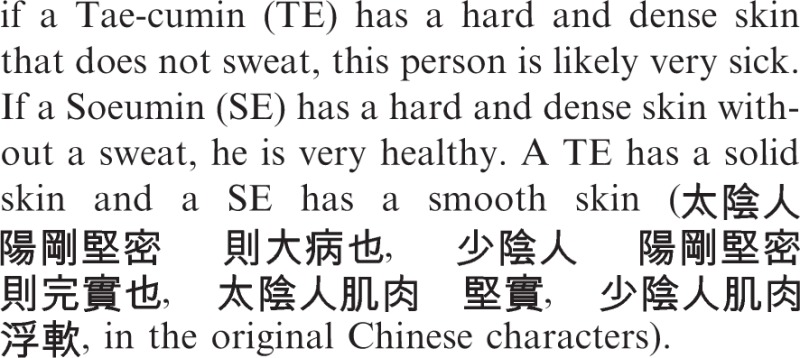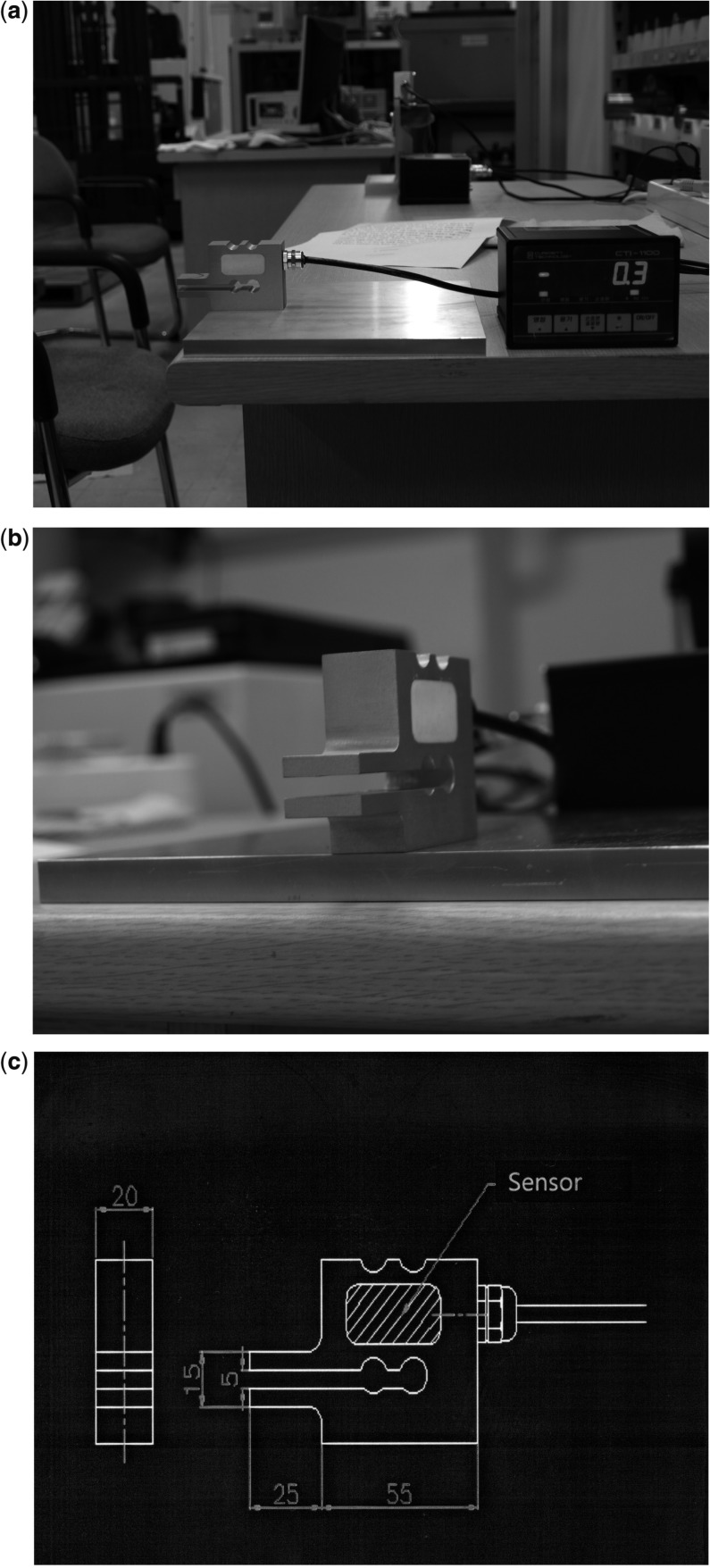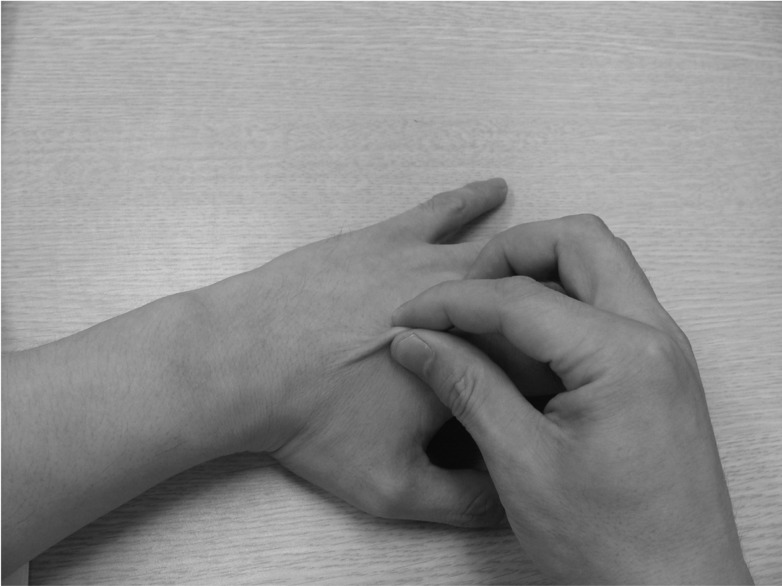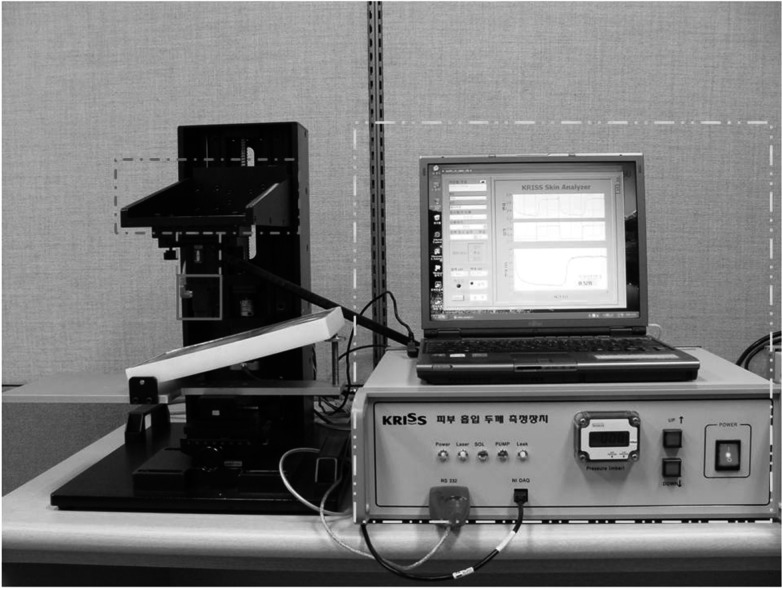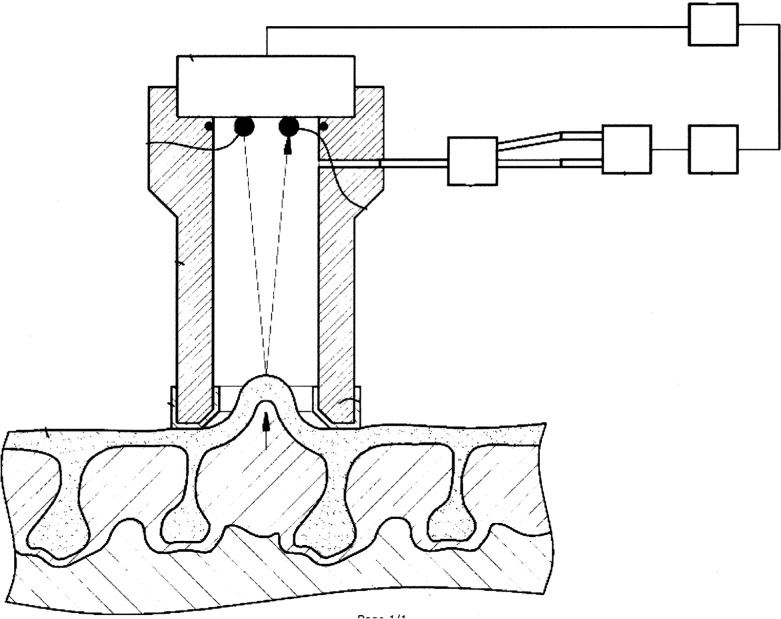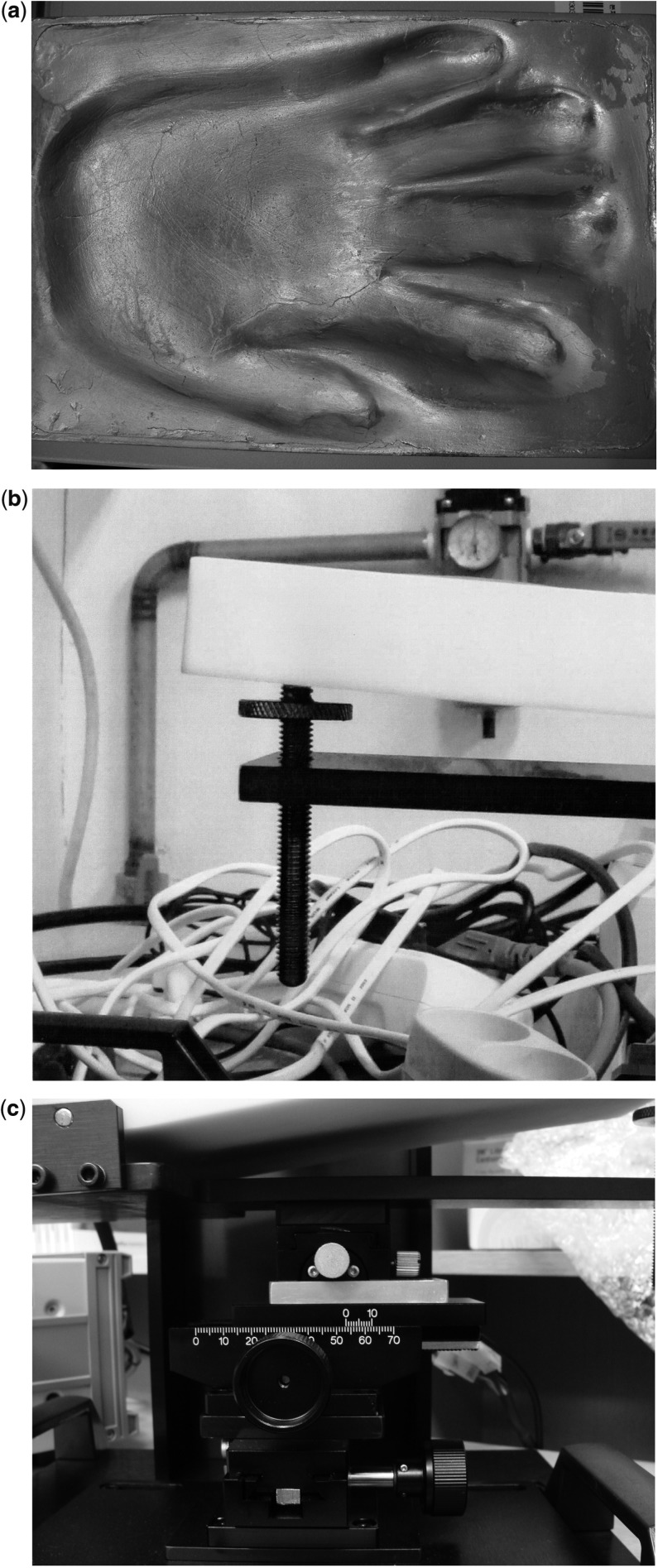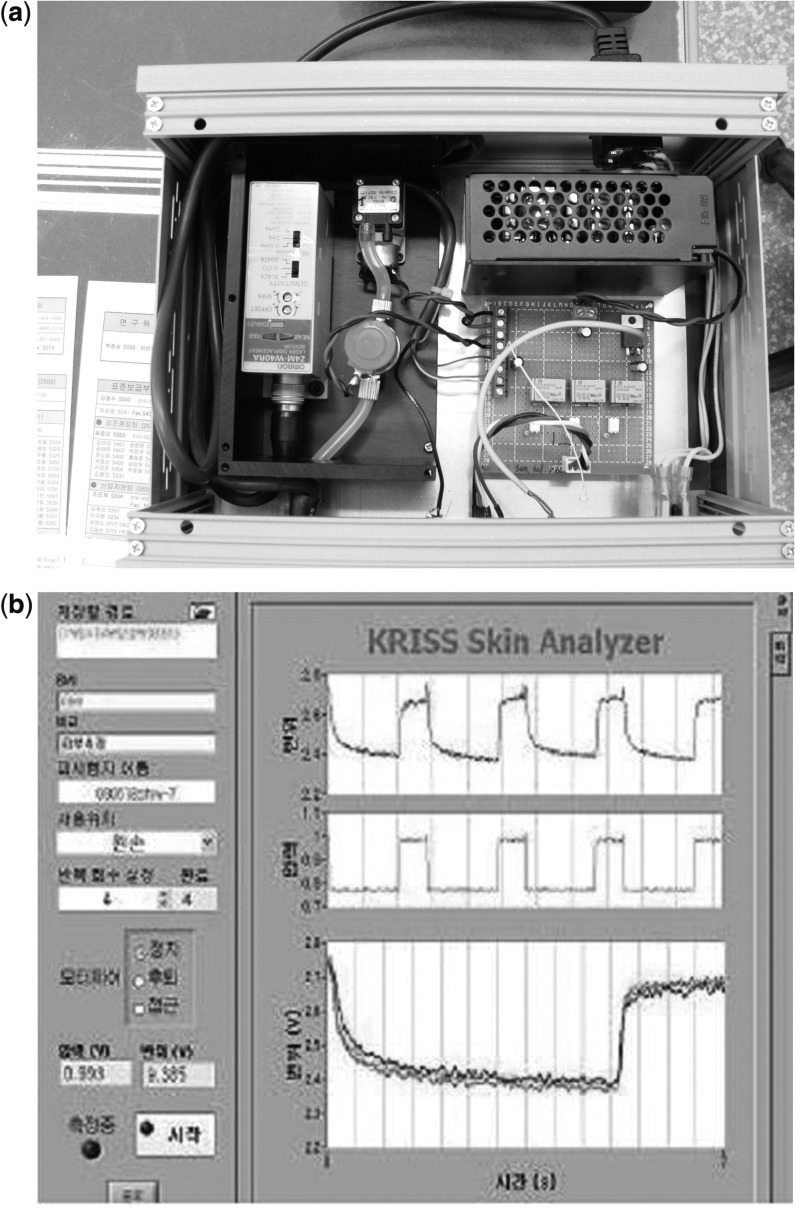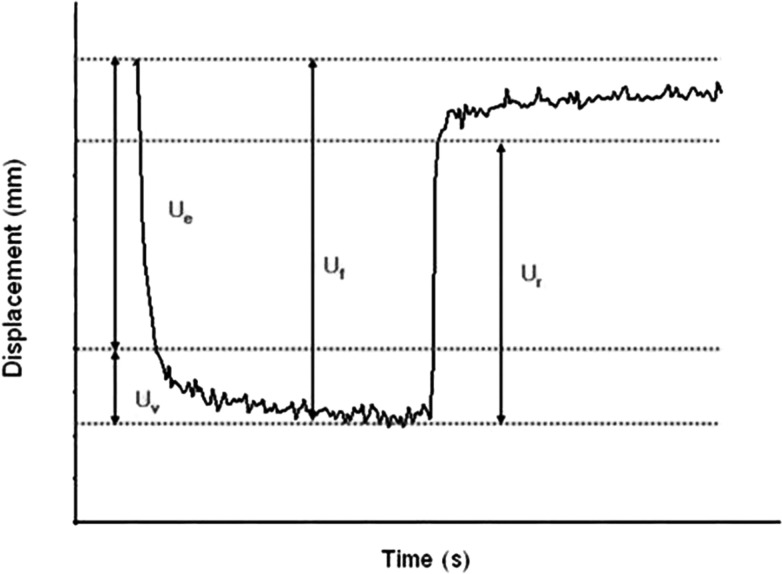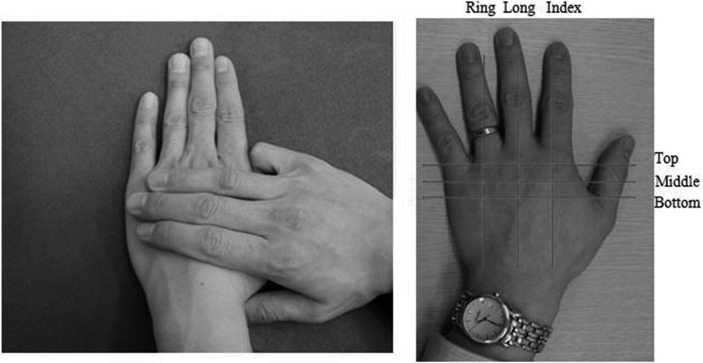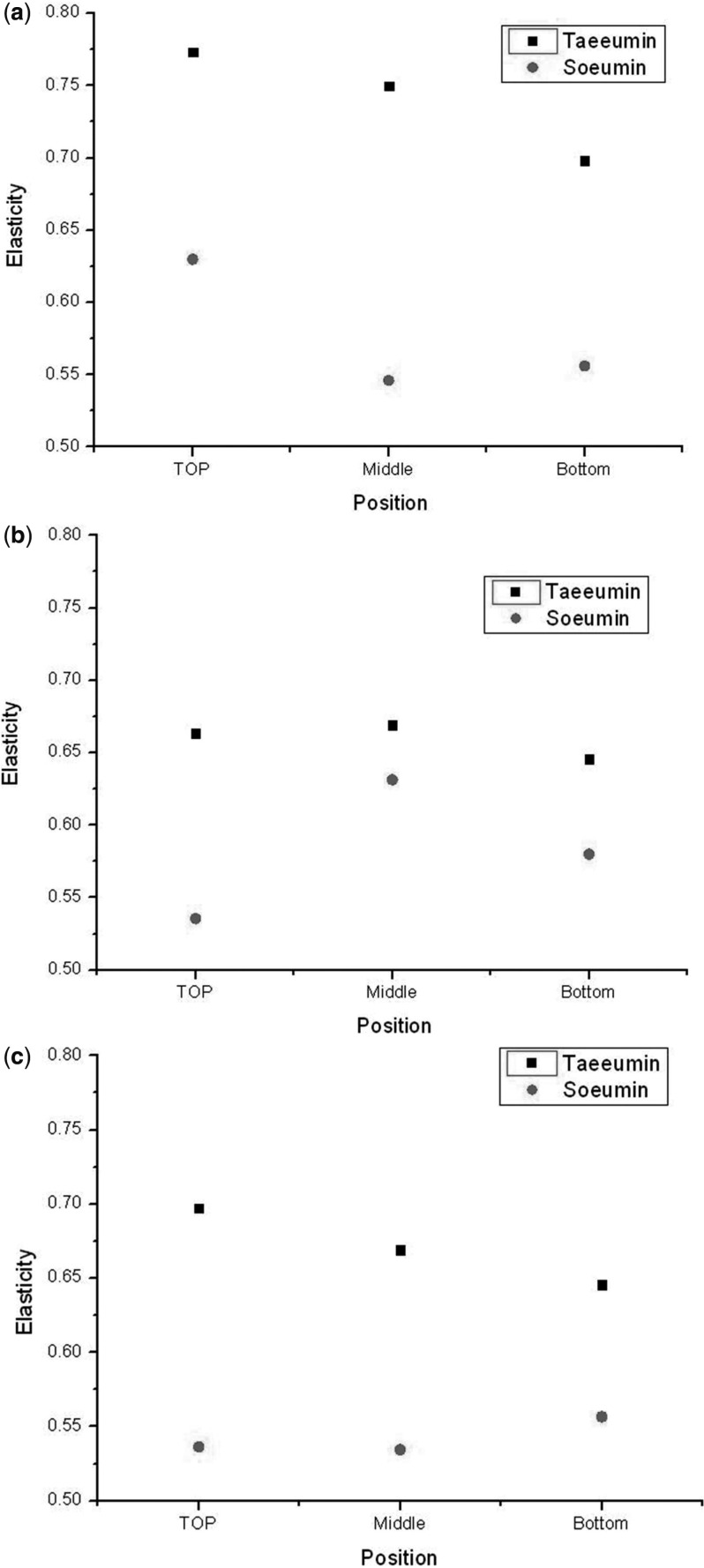Abstract
The usefulness of constitutional diagnoses based on skin measurements has been established in oriental medicine. However, it is very difficult to standardize traditional diagnosis methods. According to Sasang constitutional medicine, humans can be distinguished based on properties of the skin, including its texture, roughness, hardness and elasticity. The elasticity of the skin was previously used to distinguish between people with Tae-eumin (TE) and Soeumin (SE) constitutions. The present study designed a system that uses a compression method to measure the elasticity of hand skin and evaluated its measurement repeatability. The proposed system was used to compare the skin elasticity between SE and TE subjects, which produced a measurement repeatability error of <3%. The proposed system is suitable for use as a quantitative constitution diagnosis method for distinguishing between TE and SE subjects with an acceptable level of uncertainty.
Keywords: compression, laser sensor, palpation, skin elasticity
Introduction
The usefulness of constitutional diagnoses of humans using the skin of the hand is well established in medicine. There have been many studies of constitutions with human skin. Examples include the dichotomy of Hippocrates, the quartering method of Hall, the three constitution theory of Sigauard, the cosmic dual-force fifty people principle ( ) of Huang Di Nei Jing (
) of Huang Di Nei Jing ( ), and three docha theory popularized in India (1). However, it is very difficult to standardize traditional diagnosis methods because they are dependent on qualitative judgments of inspectors themselves. A constitutional diagnosis using human skin is typically performed via palpation. Through Sasang constitutional medicine, humans can be distinguished based on properties of the skin, including its texture, roughness, hardness and elasticity (2). The constitutional skin status has previously been reported as follows.
), and three docha theory popularized in India (1). However, it is very difficult to standardize traditional diagnosis methods because they are dependent on qualitative judgments of inspectors themselves. A constitutional diagnosis using human skin is typically performed via palpation. Through Sasang constitutional medicine, humans can be distinguished based on properties of the skin, including its texture, roughness, hardness and elasticity (2). The constitutional skin status has previously been reported as follows.
In Dongeusoosebowoon (3), the properties of different types of human skin were categorized as:
In Sasangyolam (4), ancient Korean doctors also described the constitutional skin status:
We inspect skins. The skin status of Soyangins is slippery and thin, but occasionally some Soyangins have a thick skin. The skin of TEs is thick and stiff; but TEs occasionally have a soft skin. The skin of SEs is buoyant and soft.
A recent questionnaire given to doctors of oriental medicine is presented in Table 1. Among the factors in this table, elasticity was used as the determining factor to distinguish between the TE and SE types of constitutions in several previous research sources (3–5) and several qualitative clinical studies (6–8). However, research on quantitative measurements of skin elasticity for constitutional diagnoses is lacking.
Table 1.
Questionnaire Survey for Doctors of Oriental Medicine
| What are the major factors of skin for a constitution diagnosis? | |
|---|---|
| Factor | Percentage |
| Thickness (thick, thin) | 89.2 |
| Tactile sensation (slippery, soft, rough) | 89.2 |
| Elasticity (high, low) | 70.3 |
In this study, a system that uses a compression method to measure the elasticity of hand skin was designed and its measurement repeatability was evaluated. The difference in the elasticity of the hand skin between TE and SE subjects was also investigated.
Experimental Setup
Before fabricating the measurement system, the force required by a doctor of oriental medicine to grip the skin of a human hand was measured for inclusion in the design of the system based on previous work (9) (Figure 1 ).
Figure 1.
Measuring device and its design to test the muscular strength of finger grasping; (a) a device with amplifier; (b) a device; (c) a design drawing.
The concept of the system for measuring the elasticity of human skin utilized a mechanical technique that involved direct contact with the human hand based on the method used by doctors of oriental medicine during a palpation assessment (Figure 2). Figure 3 shows the proposed system and Figure 4 shows a schematic of its contact component. The equipment (Figure 3) consisted of a compression tube that made contact with the skin (solid line), a laser sensor that measured the displacement before and after the compression step (dotted line), a motor that controlled the motion of the compression tube (dot–dashed line) and a controller with a pump for compression and a valve for handling any leaks (double dot–dashed line). The laser sensor was selected to minimize dispersion of the hand skin and to prevent damage to the skin. Table 2 lists the specifications of the measurement system. A carrying jig (Figure 5) was fabricated to ensure perpendicular contact between the sensor tip and the hand. The jig was tilted as required to maximize the flatness of the contact point.
Figure 2.
A qualitative judgment of doctors of oriental medicine during a palpation assessment.
Figure 3.
The measuring system for the elasticity of hand skin.
Figure 4.
Contact component of the designed system.
Table 2.
Specifications of the designed system
| Component | Specification |
|---|---|
| Laser sensor (ZX-LD40, OMRON) | Diffusional reflection type, DC Power Detection length: 40 ± 10 mm Resolution: 2 μm Wavelength: 650 nm Power: 1 mW |
| Valve | Three-way solenoid valve |
| Pump | 12 V, DC power |
| DAQ (USB, National Instrument) | 14-bit, 48 kS/s Multifunction I/O and NI-DAQmx |
Figure 5.
Jig to hold the hand under analysis. (a) hand placeholder; (b) tilting screw for the vertical direction; (c) tilting screws for the X and Y directions on the horizontal plane.
The measured data were transferred to a personal computer (PC) using a USB-type DAQ (data acquisition) device. The PC controlled the measurement hardware using software written in LabView Version 8.2. Basic subject details (including their name, age and gender) were recorded, and the measurement time and the compression time of the pump were controlled, as shown in Figure 6 .
Figure 6.
(a) The control component; (b) control software.
Measurability and Repeatability of the Proposed System
The grasping force for a person using the thumb and index finger—as measured 10 times using the device shown in Figure 1—was ∼10 N, with an accuracy of 1%. The compression force of the proposed system was designed to be the same as this grasping force. The diameter of the contact probe was 8 mm, and hence the compression pressure was maintained at 2000 kPa.
Figure 7 shows the variables analyzed during the measurements. Ue denotes the immediate deformation induced by the compression and Uv indicates the extra deformation caused by the viscoelasticity of the skin. Uf is the total deformation, which equals Ue + Uv. Ur denotes the immediate recovery of the skin upon removal of the compression. In this study, the elasticity was the major characteristic facilitating a constitution diagnosis between the TE and SE subjects. Therefore, the quotient of Ur/Uf was adopted, which corresponded to the elasticity of the skin and is known to be independent of the skin thickness (10–13).
Figure 7.
Variables of the designed system.
First, the measurability of the proposed system was tested. A commercial rubber plate of known elastic constant was used as the reference material. Having shown a similar value the company suggested our system was acceptable to measure the elastic properties of subjects (14).
Using the proposed system, the measurement repeatability for human skins was tested using a male subject. The elasticity was measured five times per day and the long-term stability was assessed over a period of 1 week. Table 3 lists the measurement results—averaged value of five times measurements per day. The relative repeatability error (RRE)—defined as the ratio between the SD and the average value of the elasticity—was 2% for one measurement and 2.9% for the long-term test.
Table 3.
Measurability of the designed system
| Time | 1 | 2 | 3 | 4 | 5 | 6 | RRE for one measurement | RRE for long-term measurement |
|---|---|---|---|---|---|---|---|---|
| Elasticity | 0.669 | 0.645 | 0.663 | 0.669 | 0.698 | 0.646 | 2% | 2.9% |
Optimum Position for the Measurements
Two male subjects—an SE type and a TE type, as determined through pretesting and diagnoses of their constitutions by doctors of oriental medicine in KIOM whose specialty were Sasang constitution—were selected for a comparison of the elasticity of the human hand for a quantitative diagnosis using the proposed system. The temperature and humidity of the subjects’ hands were made consistent before each measurement, since the mechanical properties of human skin are typically affected by both these factors.
The measurement region was defined as an area comprising the width between the index finger and the ring finger of the left hand and the height between the three middle fingers of the right hand, which were overlain onto the middle point of the middle finger bone of the left hand (Figure 8). This area was chosen because a doctor of oriental medicine typically palpates this region when performing a constitution diagnosis. Nine contact points in the region were defined to find the optimum contact point for a quantitative palpation measurement: their coordinates were defined from the top of index finger, top of the middle finger, top of the ring finger to bottom of the ring finger (Table 4). (‘Top’ is the point which is 1 cm below the end of each finger and ‘bottom’ is the point at which the thumb finger and index finger meet each other as shown in Figure 8)
Figure 8.
Inspection regions of the back of left hand.
Table 4.
RRE of elasticity values for SE and TE types
| Position | (T,R) | (M,R) | (B,R) | (T,L) | (M,L) | (B,L) | (T,I) | (M,I) | (B,I) |
|---|---|---|---|---|---|---|---|---|---|
| SE type | 3.3 | 7.2 | 10.6 | 3.9 | 7.8 | 12.1 | 3.1 | 10.7 | 12.5 |
| TE type | 2.0 | 3.3 | 12.5 | 3.5 | 4.0 | 5.0 | 2.6 | 4.5 | 5.7 |
R, ring finger; L, long finger; I, index finger; T, top; M, middle; B, bottom.
Figure 9 shows the measurement results for the SE and TE subjects. Each data point was the averaged value of 10 times measurements at each contact point. The elasticity of the skin on the back of the hand was higher for the TE subject than for the SE subject, which is in good agreement with the qualitative measurements of a doctor of oriental medicine and several previous studies (3–5). The measurement repeatability was highest along the top line irrespective of the constitution, which is due to differences in the microstructure of the two skin types, which itself is due to variations in the viscoelasticity along the lower lines and the resulting lower repeatability (15). The measurement repeatability was higher for the TE subject than for the SE subject since the latter had a more uneven skin that resulted in wider dispersion of the laser beam on the skin surface (6).
Figure 9.
Comparison of the elasticity values between an SE type and a TE type along (a) the index finger line, (b) the middle finger line and (c) the ring finger line.
Clinical Data between TE and SE
Table 5 lists the clinical data of elasticity from the two constitutions using the proposed system. Each data point was the averaged value of 10 times measurements collected from five TE and three SE male subjects using the top of the ring finger as contact point. Despite the presence of variations in the characteristics of the subjects with each type of constitution (e.g. age, height and weight), the elasticity was uniformly higher in TEs than in SEs with an acceptable level of uncertainty; this tendency is in good agreement with findings reported in the literature (3–5).
Table 5.
Clinical data of elasticity for TE and SE types
| TE |
SE |
|||||||||
|---|---|---|---|---|---|---|---|---|---|---|
| 1 | 2 | 3 | 4 | 5 | 1 | 2 | 3 | 4 | 5 | |
| Elasticity | 0.697 | 0.712 | 0.688 | 0.691 | 0.703 | 0.536 | 0.554 | 0.544 | 0.556 | 0.537 |
Conclusion
In conclusion, a system for measuring the elasticity of human skin was constructed using a compression tube and a laser sensor for the purpose of constitutional diagnoses. The uncertainty in elasticity measurements when using this system was <3%. The elasticity was higher for the TE type than for the SE type with an acceptable level of uncertainty, which is consistent with the findings of previous studies. It can be concluded that the proposed system is suitable as a quantitative constitutional diagnosis method for distinguishing between TE and SE subjects with an acceptable level of uncertainty.
Acknowledgement
This work formed part of the project entitled ‘Development of Diagnosis Systems using the Senses’ (No. 10028423) funded by the Ministry of Knowledge Economy of Korea.
References
- 1.Shim JP. Sasang constitution in Sasang medicine and constitution principle from eastern and western cultures. Master's Thesis. 1998 Kyung Hee University (in Korean) [Google Scholar]
- 2.Shim EB, Lee SW, Kim JY, Earm YE. Physiome and Sasang constitutional medicine. J Physiol Sci. 2008;58:433–40. doi: 10.2170/physiolsci.RV004208. [DOI] [PubMed] [Google Scholar]
- 3.Lee JJM. Dongeusoosebowoon (Longevity & Life Preservation in Oriental Medicine) Seoul: Kyuhg Hee University Press; 1996. [Google Scholar]
- 4.Lee DG. Sasangyolam. Korea: WoonBoolGyo; 1995. (in Korean) [Google Scholar]
- 5.Park IS. Dongeusa Sangyogyul. Korea: SoNaMoo; 1992. (in Korean) [Google Scholar]
- 6.Lee SH, Joo JC, Yoon YS, Kim JY. Clinical study of the relations of the refiness and the tactile of back skin of the hand to Sasang constitutions depending on sex and age. Korean J Ori Physio Path. 2005;19:536–43. (in Korean) [Google Scholar]
- 7.Lee SH, Choi SM, Kim HG, Kim JY. Clinical study of the relations of the thickness and the stiffness of back skin of the hand to Sasang constitutions depending on sex and age. Korean J Ori Physio Path. 2005;19:561–7. (in Korean) [Google Scholar]
- 8.Lee SH, Han SS, Choi SM, Joo JC, Kim JY. Clinical study of properties of back skin of the hand to Sasang constitutions. J Ori Physio Path. 2005;19:15–18. (in Korean) [Google Scholar]
- 9.Lee JT, Song HW, Park YK, Oh CH. Measurement of finger muscular force to set up a standard for intelligent artificial arms. Proceeding of APMF 2007. 2008:213–19. [Google Scholar]
- 10.Barel AO, Courage W, Clays P. Suction method for measurement of skin mechanical properties: the Cutometer®. In: Serup J, Jemec GBE, editors. Handbook of Noninvasive Methods and the Skin. Boca Raton, FL: CRC Press; 1995. pp. 335–40. [Google Scholar]
- 11.Dobrev HP. In vivo study of skin mechanical properties in patients with systemic sclerosis. J Am Acad Dermatol. 1999;40:436–42. doi: 10.1016/s0190-9622(99)70494-9. [DOI] [PubMed] [Google Scholar]
- 12.Dobrev HP. In vivo study of skin mechanical properties in scleredema of buschke. Acta Derm Venereol. 1998;78:103–6. doi: 10.1080/000155598433412. [DOI] [PubMed] [Google Scholar]
- 13.Serup J, Notrtheved A. Skin elasticity in psoriasis. In vivo measurement of tensile distensibility, hysteresis, and resilience distension with a new method. Comparison with skin thickness as measured with high-frequency ultrasound. J Dermatol. 1985;12:318–24. doi: 10.1111/j.1346-8138.1985.tb02848.x. [DOI] [PubMed] [Google Scholar]
- 14.Song HW. A Project Report for ‘Establishment of Standard for New Demand’ in KRISS 2008 [Google Scholar]
- 15.Langer K. On the anatomy and physiology of the skin (I–IV) Br J Plast Surg. 1978;31:3–8. 93–106, 185–99, 273–8. [PubMed] [Google Scholar]



